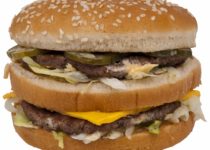Exchange Rate and Purchasing Power – Concept of the Big Mac Index

Roughly speaking, the exchange rate is the price at which a currency can be exchanged for another currency. Currencies are traded on the foreign exchange market, where supply and demand result in exchange rates / currencies prices – by Valentin Markus Schulte, economist, Berlin
The exchange rate between currencies is an important issue in economics because it affects the competitiveness of the economy. For example, most exchange rates from the news are the nominal exchange rate in volume quotation. This results from the bill: Price of the domestic currency in foreign monetary units $ / €.
The euro in this example stands for the domestic currency and the dollar for the foreign currency. If the numerator and denominator are swapped, the less familiar nominal exchange rate is quoted, which describes the price of the foreign currency in domestic monetary units.
Real exchangerate: Indicator of purchasingpower
In contrast to the nominal exchange rate, the exchange rate of domestic and foreign goods is measured by the real exchange rate. For this purpose, a representative shopping cart is formed and its price compared at home and abroad. From this comparison, the purchasing power of an economy can be seen.
According to the theory of purchasing power parity, the exchange rate adapts so that the purchasing power of the participating currencies is identical. If there is purchasing power parity between two economies, the real exchange rate is one. However, there are strong assumptions in this theory, such as: no transaction costs or state trade barriers.
Big Mac Index as a concept
In order to compare the purchasing power of different countries, the magazine The Economist developed the so-called Big Mac Index. The Big Mac from McDonalds offers itself as a homogeneous good for a comparison and has the same price according to the purchasing power parity after conversion of the currencies in each country of the world. Looking at the Big Mac Index from 2019, the result is that there are significant differences in the price of a Big Mac. While a Big Mac in Switzerland costs $ 6.62, it costs $ 1.65 in Russia. It can be stated that:
- thepurchasingpower in Switzerland is higherthan in Russia
- the theory of purchasing power parity does not work without the strict assumptions of the model.
The Big Mac Index is a highly simplified model, but it is well suited to compare the differences in the purchasing power of different countries.
Kurze Zusammenfassung:
Der Wechselkurs bezeichnet grob gesagt den Preis, mit dem eine Währung in eine andere Währung umtauschbar ist. Währungen werden am Devisenmarkt gehandelt, dort ergeben sich aus Angebot und Nachfrage die Wechselkurse / Preise der Währungen. Will man die Kaufkraft messen wird ein represäntativer Warenkorb gebildet und dessen Preis im In- und Ausland miteinander verglichen. Aus diesem Vergleich lässt sich die Kaufkraft einer Volkswirtschaft ablesen.
V.i.S.d.P.:
Valentin Markus Schulte
EconomistB.Sc.
PRESSEKONTAKT
PR Berlin
Schausitzen Berlin PR
Malteser Strasse 170
12277 Berlin
Website: schausitzen-pr.de/
E-Mail : kontakt@schausitzen-pr.de
Telefon: 030 22 19 220 15

